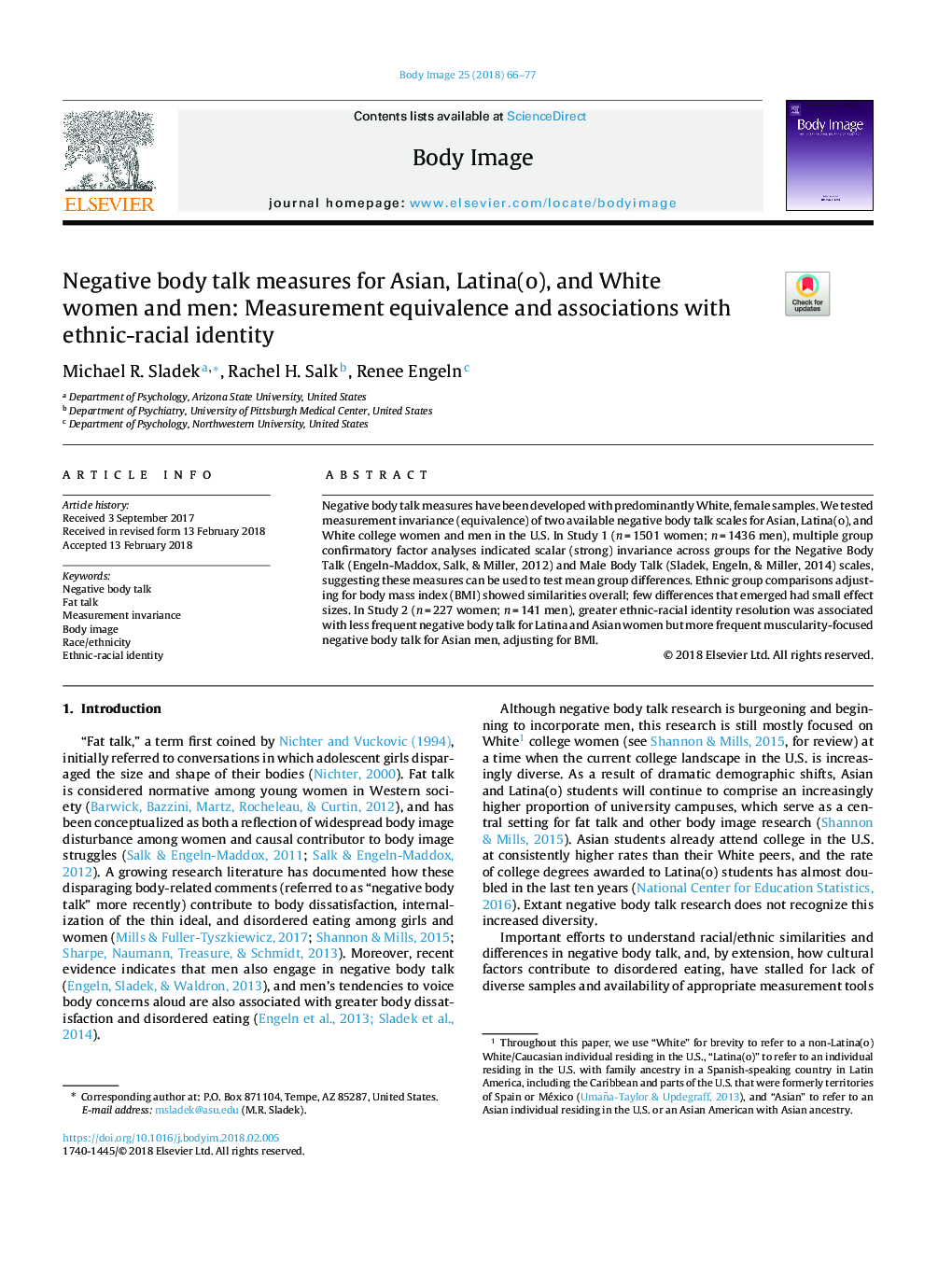| Article ID | Journal | Published Year | Pages | File Type |
|---|---|---|---|---|
| 7263010 | Body Image | 2018 | 12 Pages |
Abstract
Negative body talk measures have been developed with predominantly White, female samples. We tested measurement invariance (equivalence) of two available negative body talk scales for Asian, Latina(o), and White college women and men in the U.S. In Study 1 (nâ¯=â¯1501 women; nâ¯=â¯1436 men), multiple group confirmatory factor analyses indicated scalar (strong) invariance across groups for the Negative Body Talk (Engeln-Maddox, Salk, & Miller, 2012) and Male Body Talk (Sladek, Engeln, & Miller, 2014) scales, suggesting these measures can be used to test mean group differences. Ethnic group comparisons adjusting for body mass index (BMI) showed similarities overall; few differences that emerged had small effect sizes. In Study 2 (nâ¯=â¯227 women; nâ¯=â¯141 men), greater ethnic-racial identity resolution was associated with less frequent negative body talk for Latina and Asian women but more frequent muscularity-focused negative body talk for Asian men, adjusting for BMI.
Related Topics
Health Sciences
Medicine and Dentistry
Psychiatry and Mental Health
Authors
Michael R. Sladek, Rachel H. Salk, Renee Engeln,
